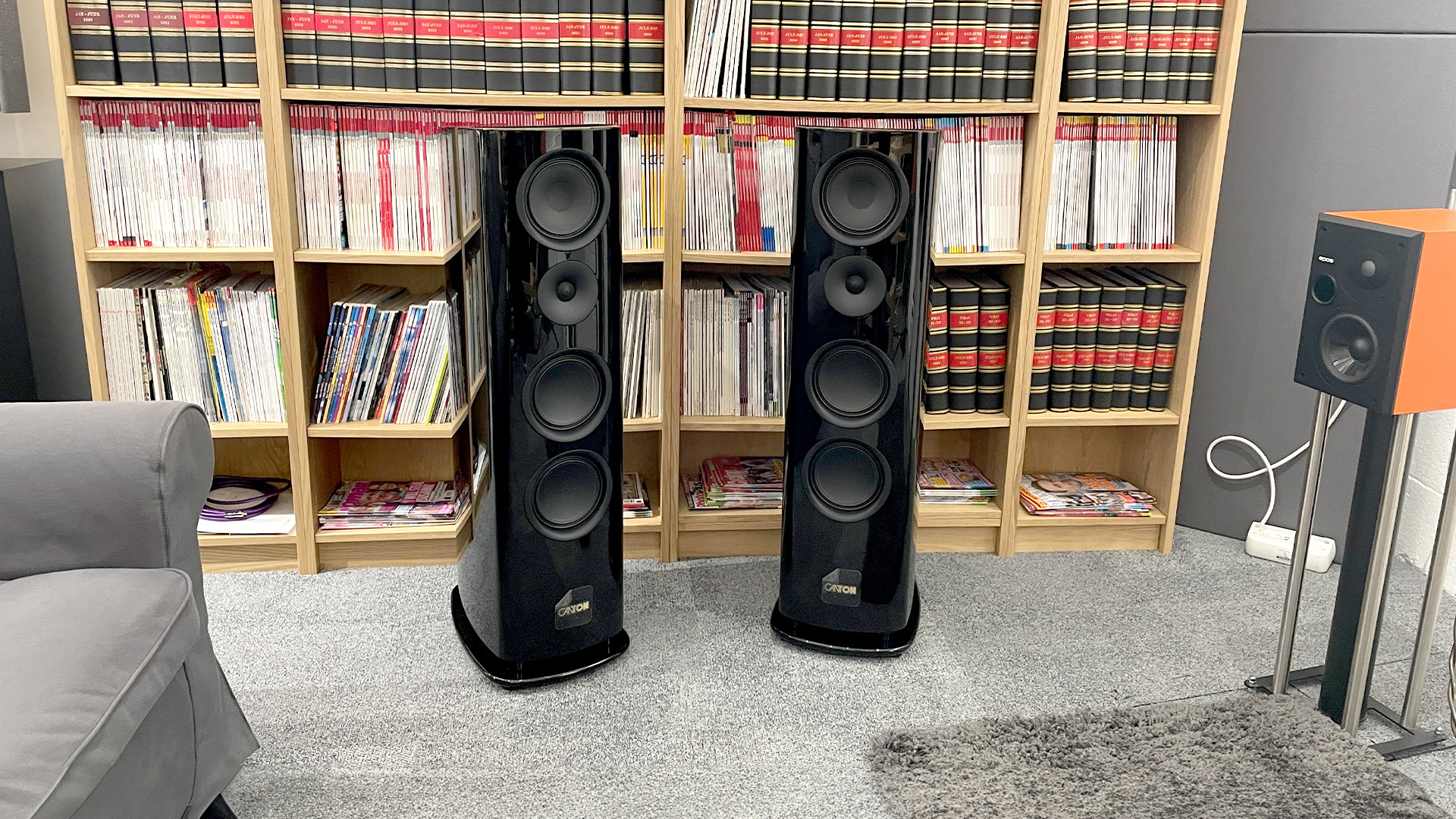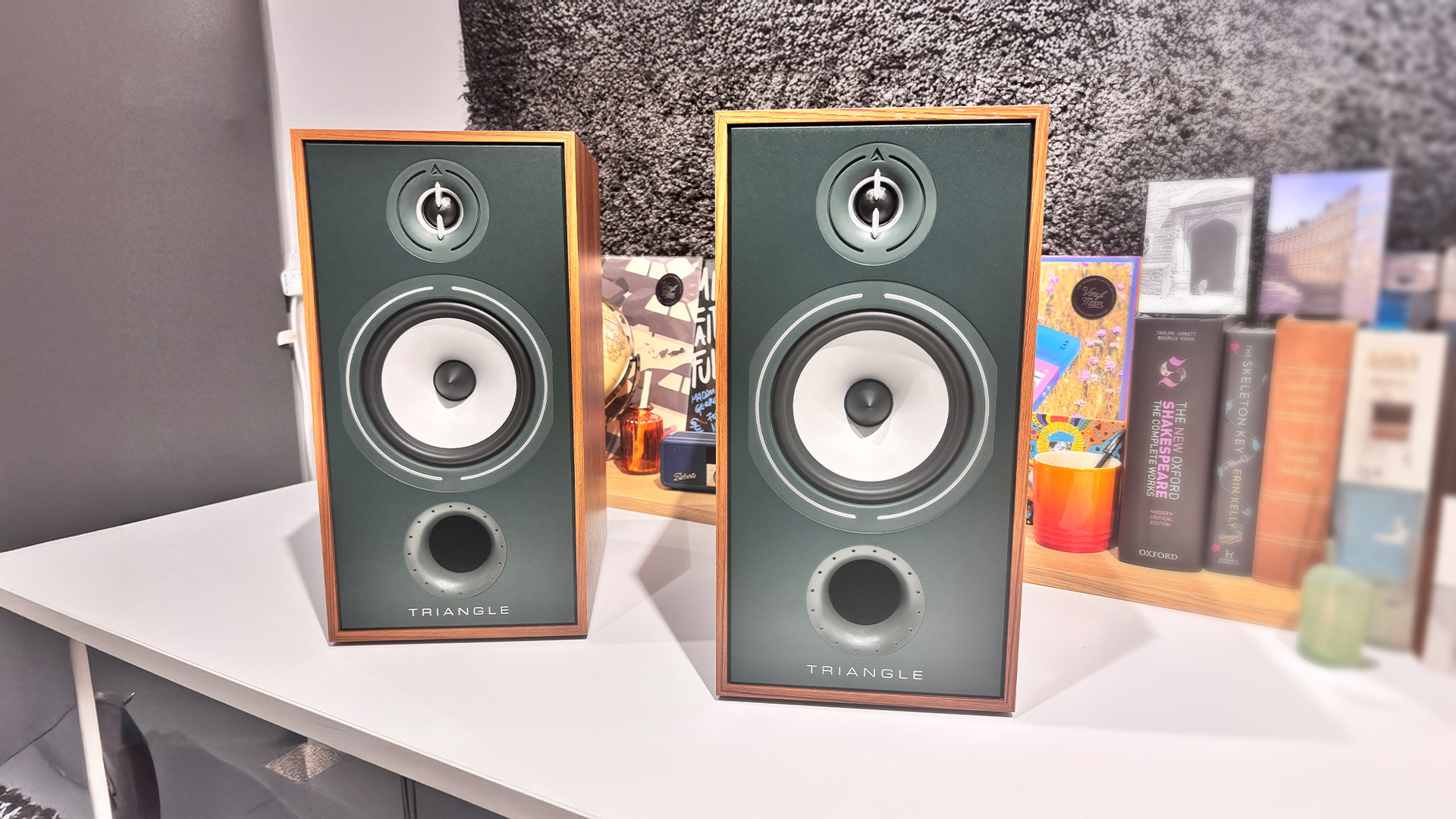What Hi-Fi? Verdict
Canton’s Reference 5 look great on paper but lack the sonic sophistication expected at this level
Pros
- +
Large-scale and punchy performance
- +
Impressive at higher volume levels
- +
Deep and powerful bass; Excellent build and finish
- +
Tonal adjustability
Cons
- -
Sound falls short in terms of finesse and subtlety
- -
Rhythmic drive could be better
- -
Dynamics lack expression
Why you can trust What Hi-Fi?
It is hardly unusual to find a company being positive about its products on its own website. But when a well-established manufacturer like Canton uses words like ‘intricately built masterpiece’, ‘epochal sound quality’ and ‘perfect craftsmanship’ to describe its new top-end Reference series, even we start to take notice.
As we unpack our Reference 5 review samples, it seems the brand’s confidence has solid foundations if the exceptional build quality and interesting engineering of these floorstanders are anything to go by. Any manufacturer that offers a 10-year warranty on a product has to be sure of its quality.
The Canton Reference 5 is the step-up floorstander in an eight-strong range that includes a dedicated subwoofer and centre speaker alongside a range-topper, the Reference 1, that retails for £20,999 / $27,000 / AU$44,999. Despite coming in as one of the early rungs of the Reference ladder, the Reference 5 floorstander we're testing here packs in all its big brother’s essential technical ingredients.
Build & design
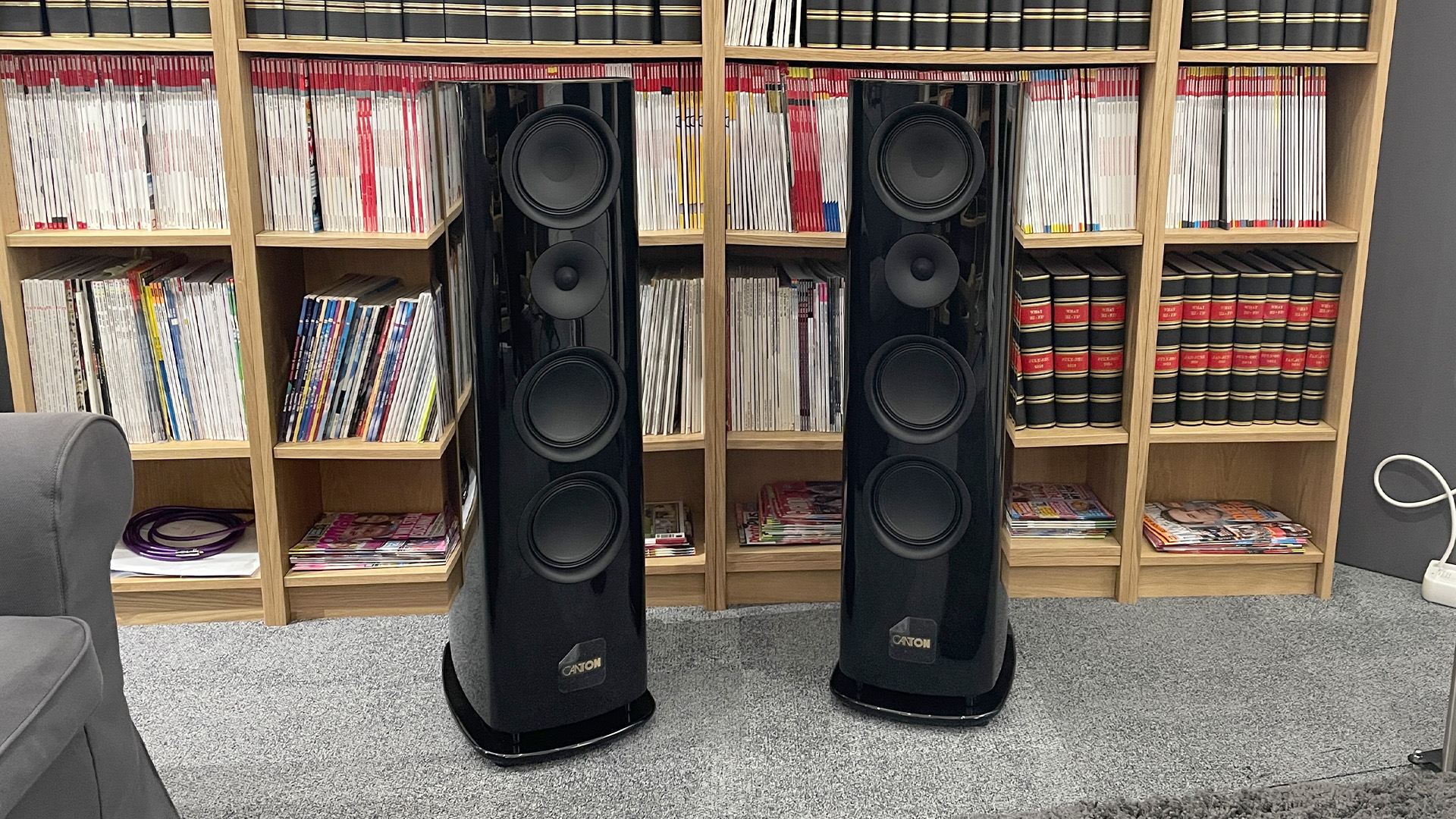
One of the highlights is the formidable-looking driver array, particularly the trio of 17.4cm BCT units; two are used for bass, leaving frequencies above 170Hz for the dedicated midrange driver. The initials BCT stand for Black Ceramic Tungsten. Canton describes it as a composite material where the drive unit’s aluminium cone is partially (25 per cent) converted into a ceramic structure and loaded with tungsten along with other metal particles.
This process is claimed to deliver an optimal blend of low weight and high rigidity. It also gives the material its distinctive black colour.
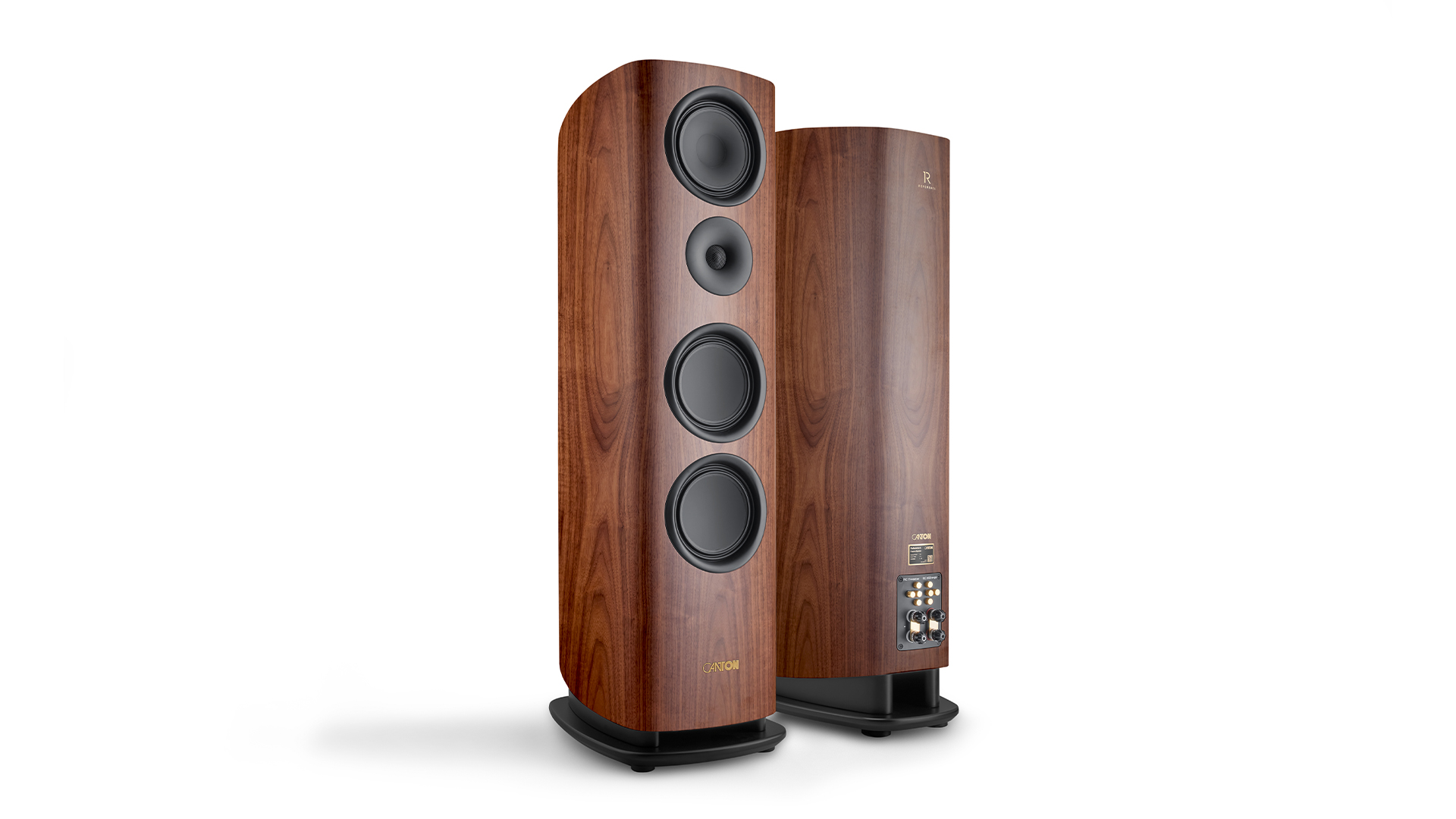
Type Floorstanders
Drive units 25mm BC tweeter, 17.4 cm BCT midrange, 2x17.4cm BCT bass driver
Ported? Yes (downward)
Bi-wire? Yes
Impedance 4 ohms
Sensitivity 88dB
Dimensions (hwd) 101 x 27 x 43cm
Weight 36kg
Finishes x 3 (piano black, white satin, walnut)
High frequencies, from 3kHz onwards, are handled by a 25mm BC (Black aluminium oxide Ceramic) dome tweeter and once again, low weight and rigidity are claimed to be the benefits. The tweeter's dispersion is governed by a carefully-shaped asymmetrical waveguide, which helps integration to the midrange, too.
The Reference 5’s enclosure is beautifully made. At 36kg, these towers are reassuringly hefty in weight and there is little to criticise when it comes to fit and finish – this really is a nicely turned-out product. There are three finish options - piano black, white satin and (at a small premium) walnut – and they all look smart.
The latest hi-fi, home cinema and tech news, reviews, buying advice and deals, direct to your inbox.
The cabinet is made of multiple bonded layers of fibreboard, sandwiched with damping material, and then pressed to achieve the desired curved shape. The benefits of the curved enclosure are claimed to be a reduction of internal standing waves and impressive rigidity. The curved front baffle is also claimed to improve the speaker’s dispersion characteristics.
We are glad to report that Canton hasn’t skimped on speaker terminal quality; the biwire set fitted here are high-quality WBT binding posts and are nice to use. Above the speaker terminals, you will find the Reference 5’s tone control. It takes the form of a small metal plate that can be moved between different terminals to adjust midrange and treble output levels. The adjustment is relatively subtle at + or - 1.5dB, and so can be useful for fine-tuning the speaker’s tonal balance in a room. We wish more manufacturers would follow Canton’s lead in this respect.
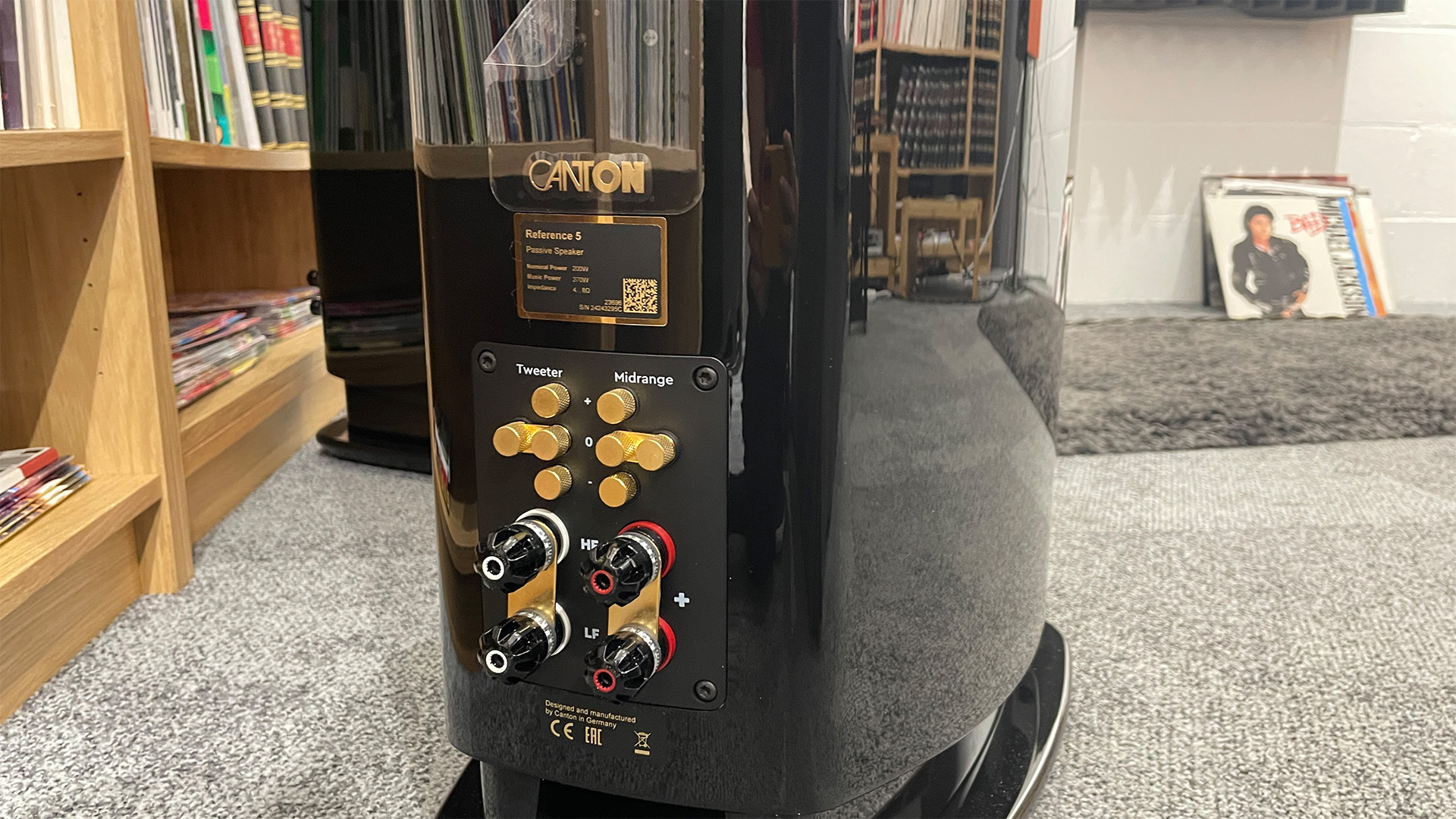
On paper, the Reference 5 isn’t the easiest load. It has a nominal impedance of 4 ohms and a sensitivity of 88dB/W/m. Given the price point and quality of likely partnering amplifiers, there really shouldn't be an issue with matching, unless you have gone down the ultra-low powered valve route.
Using a downward-firing port makes the speakers less fussy about room placement than with a conventional front or rear-firing design. Even so, the Reference 5 performs best when given a decent amount of room to breathe. In our 3 x 7 x 5m (hwd) test room, we have them around a metre out from the wall and well away from the sides. This positioning gives balanced and articulate lows without compromising the speaker’s stereo-imaging ability. They sound more convincing when slightly angled towards the listening position, as this solidifies the central image.
Given the price of these Cantons, it would be fair to expect that they demand top-class partnering equipment. During the test process, our main sources are Naim’s ND555/555 PS DR music streamer and Vertere’s SG-1/XtraX record player. Amplification duties are mostly carried out by Burmester’s 088/911 MkIII amplifier but we also use PMC’s Cor integrated to see how the speakers perform with a more price-compatible partner. Our speaker benchmarks are ATC’s SCM50, the Sonus Faber Sonetto V G2 and the cheaper, but excellent Epos ES14N standmounters.
Sound
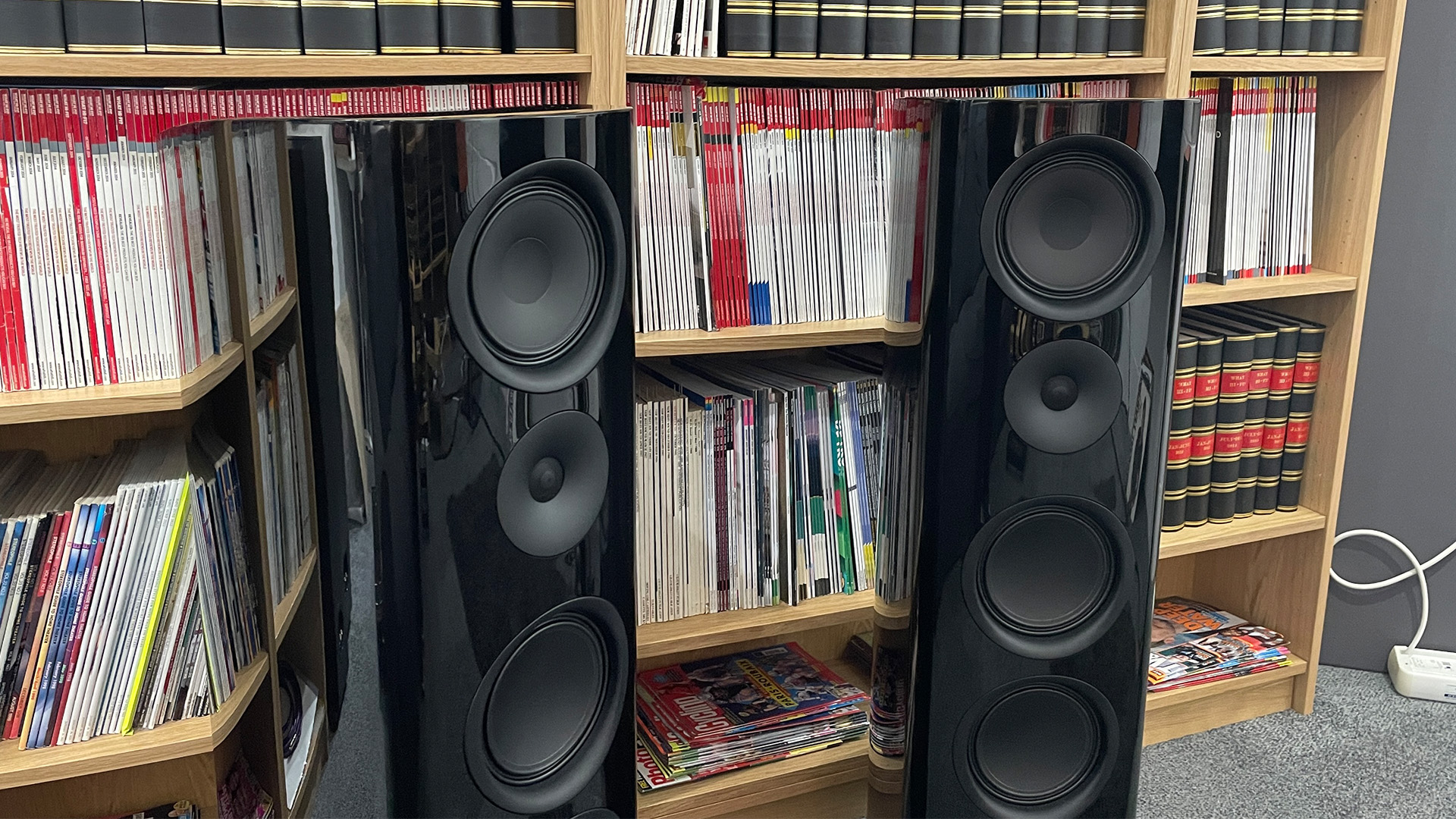
Given the Cantons’ overall star verdict, it will come as no surprise that we have certain misgivings about their performance. We will cover those in due course, but let’s start with the positives. There is no denying that, given an appropriate signal, these are big and powerful-sounding speakers.
As we play Hans Zimmer’s Interstellar OST it is hard not to be impressed by the scale and authority of the Cantons’ presentation. That driver complement looks imposing and it doesn’t disappoint, delivering deep, muscular lows combined with minimal stress. Their bass is not only meaty but also pleasingly articulate and taut with it. They go loud effortlessly too, so will prove ideal if you have a large room to fill.
They have a solid and punchy manner, one that stays composed even when the speakers are pushed hard. We admire the crispness of the sound and the generally decent level of clarity on offer. Stereo soundstaging is good, though the presentation doesn’t project free of the speaker enclosures as well as we would expect. Still, the imaging is stable, nicely focused and decently layered.
Make sure your seating position isn’t too high relative to the tweeter though; we get the most convincing results when we slouch on our sofa a little to make sure our ears are closer to the tweeter/midrange axis. Using the Cantons’ adjustable feet to tilt back the speakers a little helps though.
As we work through our music collection it becomes apparent that the Reference 5 aren’t particularly talented all-rounders. Feed them Prince’s Diamonds And Pearls set and you’ll notice that they don’t render the rhythmic drive of tracks like Gett Off very well. These towers sound stilted and mechanical, unable to flow with the music or convey the hard-charging energy of the piece.
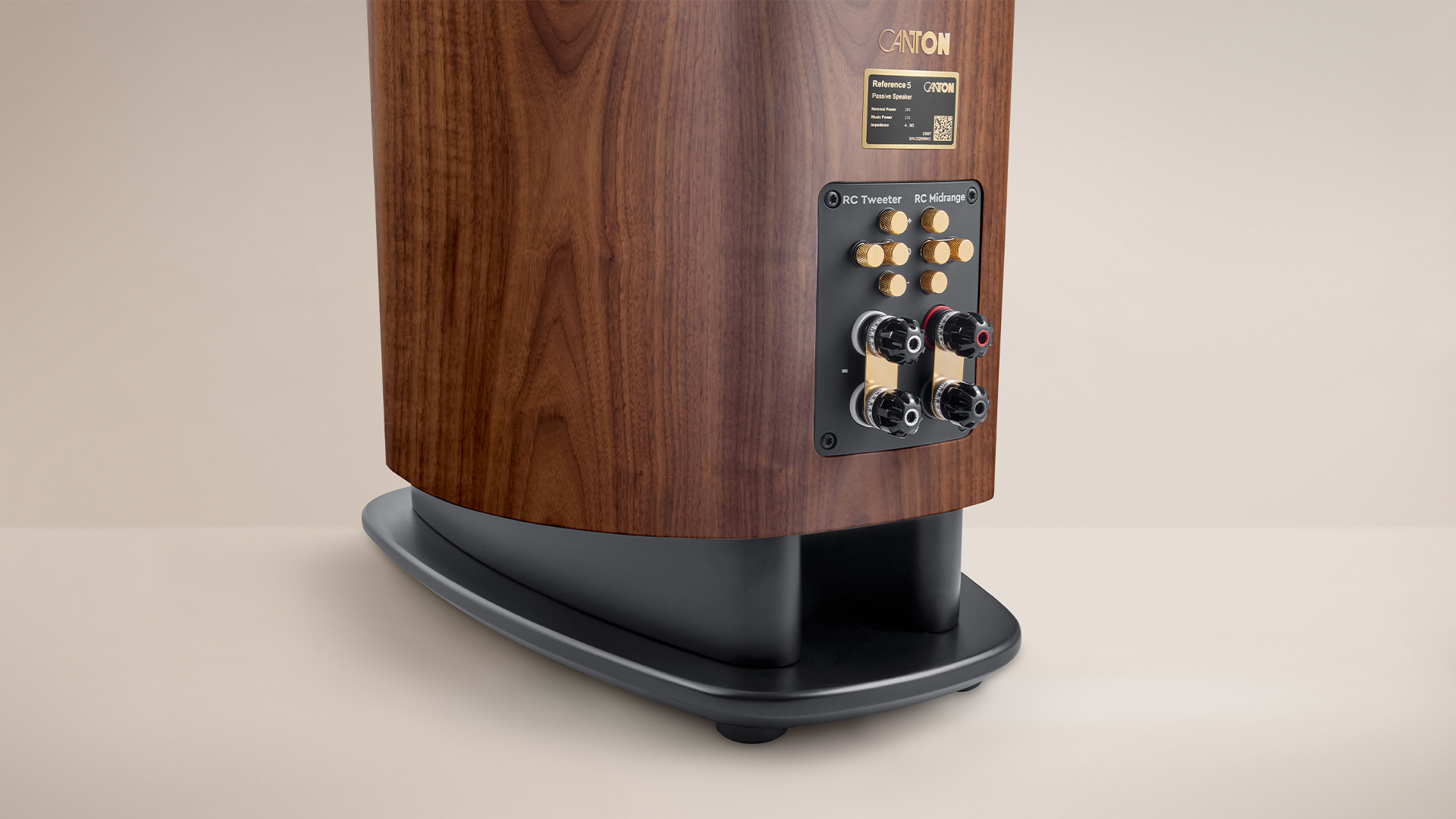
While leading edges of notes come through with punch, these towers seem unable to reproduce the full envelope of the sound, lacking the dynamic finesse and textural resolution to do so. Through the Cantons, Prince sounds a little bored, and he should never come across that way. Ultimately, the Reference 5 have a detached way of reproducing music. If we were being kind, we would describe it as an analytical approach to replay, but what it does is reduce our enjoyment of the music, and that isn’t good.
It doesn’t help that their tonality, even after we play around with the various adjustments, is a little on the cool side. This balance dilutes the natural warmth in voices and instruments, once again affecting the speakers’ ability to communicate passion and emotion in the music.
Verdict
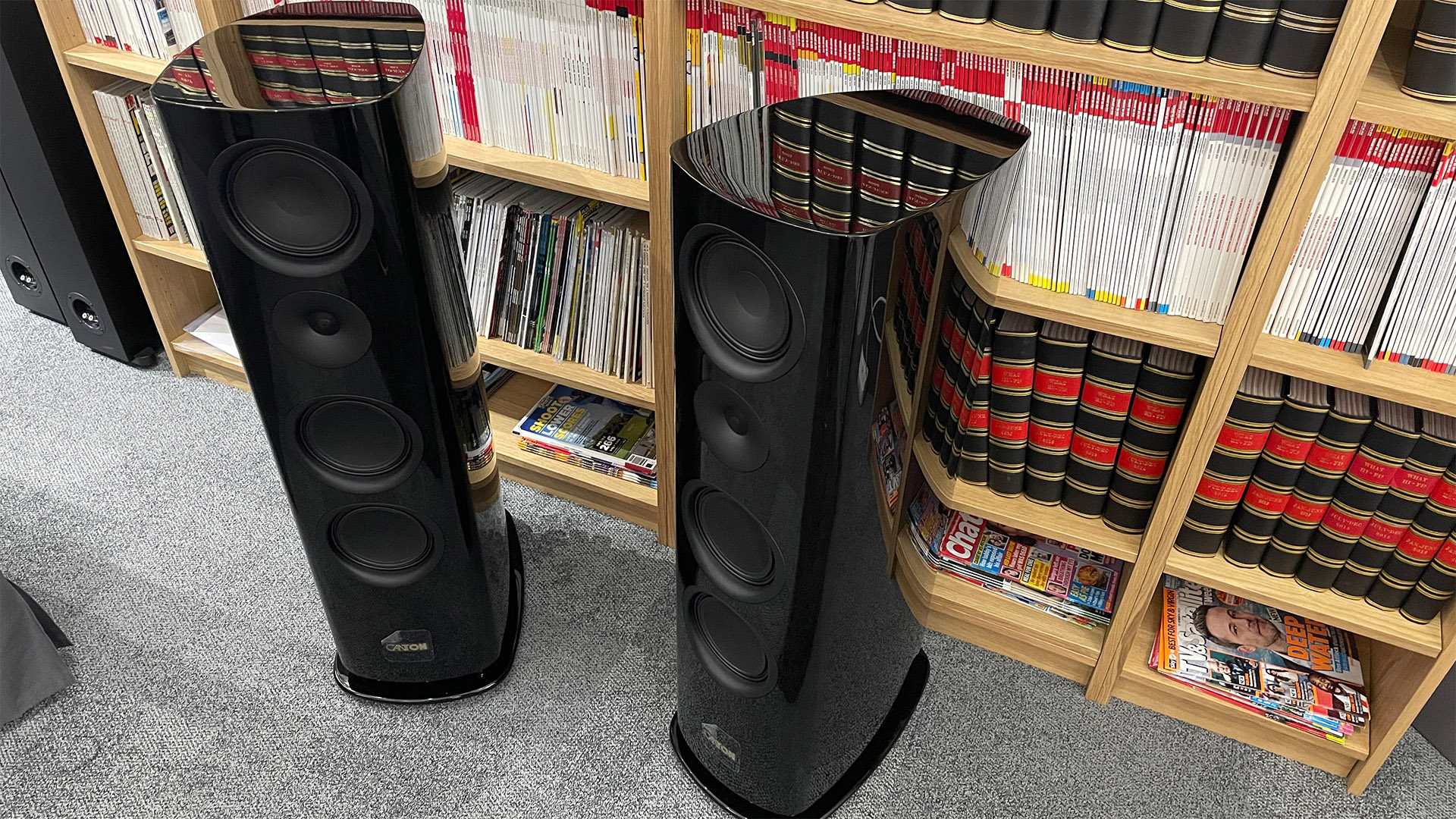
We could go on, but it must be clear by now that we haven’t warmed to these speakers. They sound hard and unyielding to our ears, lacking the naturalness and dynamic subtlety to make a mark at this elevated price level.
There is no denying the quality of their build or even the cleverness of their various technologies, but those things aren’t enough to earn the Reference 5 a recommendation.
Review published: 6th May 2025
SCORES
- Sound 3
- Build 5
- Compatibility 3
MORE:
Read our review of the Audiovector R3 Arreté
Also consider the ProAc Response D20R
Read our ATC SCM50 review
Best floorstanding speakers: budget to premium models tested by our experts

Ketan Bharadia is the Technical Editor of What Hi-Fi? He has been reviewing hi-fi, TV and home cinema equipment for almost three decades and has covered thousands of products over that time. Ketan works across the What Hi-Fi? brand including the website and magazine. His background is based in electronic and mechanical engineering.
- Kashfia KabirHi-Fi and Audio Editor
- Andy Madden
You must confirm your public display name before commenting
Please logout and then login again, you will then be prompted to enter your display name.
